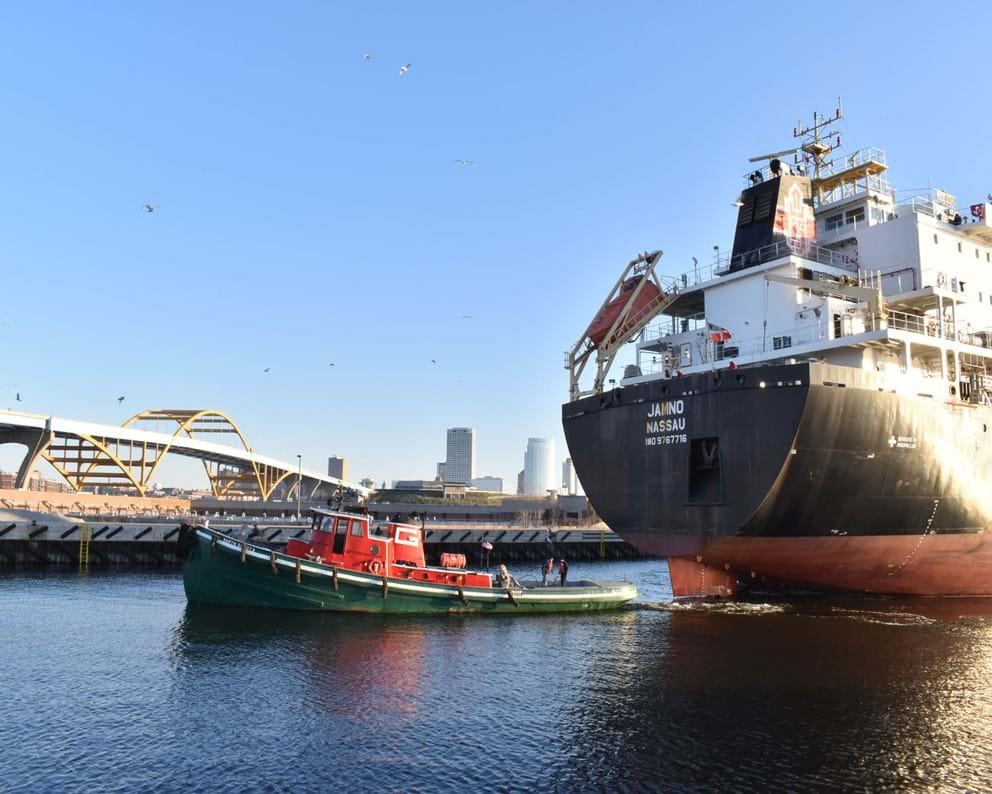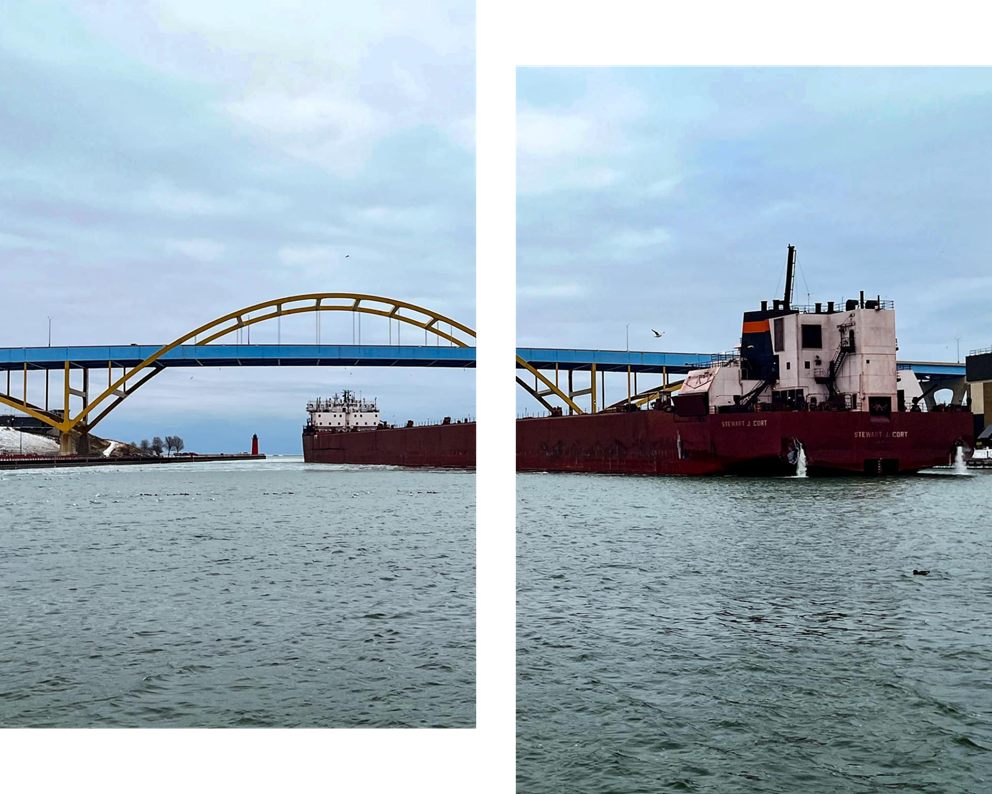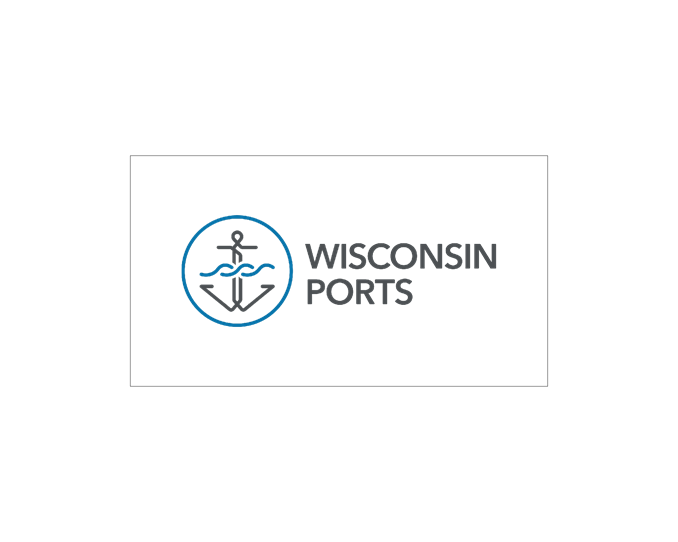
Q & A — Wisconsin Commercial Ports Association
Q & ACoordinated approach benefits all members of the Wisconsin Commercial Ports Association
The Wisconsin Commercial Ports Association joined Green Marine as an association member this past February. The association encompasses 15 ports representing most of maritime activity within the state on Lake Michigan, Lake Superior and the Mississippi River. Its membership is responsible for some 40 million tons of annual cargo.
Adam Tindall-Schlicht, the Wisconsin Commercial Ports Association’s President, recently spoke with Green Marine’s contributing writer Julie Gedeon.
The Wisconsin Commercial Ports Association celebrated its 20th year in 2021. What was the motivation for creating the association?
It became clear that having a state-wide organization to share information and best practices, as well as being on the same page in terms of educational outreach and advocacy, would be a good idea.
How does the association work to strengthen Wisconsin’s maritime economy?
One of the most important things is our coordination with the State of Wisconsin Department of Transportation. We’re very lucky here in Wisconsin with the state offering a Harbor Assistance Program (HAP) dedicated to improving port infrastructure through this grant program. As a result, it’s more often possible for a port to leverage other private and public capital because it can use the state program as part or all of its matching funds. Our association has worked with the state to ensure that HAP funding is targeted for projects that really enhance the state’s maritime economy.

So, you're not looking only at what infrastructure funding can do to improve a specific port but the state’s overall maritime network?
Correct. The relationship between Wisconsin commercial ports and the Wisconsin Department of Transportation permits us to use HAP in a way that not only results in local economic benefit but is directly tied to improving the state-wide integration of the maritime network and supply chain value.
Is there an example you can share?
Port Milwaukee became one of the first nationwide recipients of the U.S. Department of Transportation Port Infrastructure Development program, enabling us to construct a new $35-million agricultural export terminal that will be fully operational by next year. The port qualified for the federal grant by providing matching funds through an almost $9-million HAP grant, a nearly $6-million Port Milwaukee investment, and private funding from the Delong Company.
Has Wisconsin’s commercial port system been underutilized to date?
Yes and no. On one hand, Wisconsin’s commercial ports sustain more than 9,500 jobs and generate $1.6 billion in economic impact for the state annually. On the other hand, I would agree with analyses that suggest we could easily double the amount of economic activity at ports, especially at Wisconsin’s three largest ones: the Port of Green Bay, the Port of Duluth/Superior, and Port Milwaukee.
Our commercial ports are all looking at how climate change will affect trade patterns.
How are you regarding this doubling potential as everyone begins to look seriously at the need to decarbonize transportation and dramatically lower environmental impacts?
Our commercial ports are all looking at how climate change will affect trade patterns. Already we’ve seen coal trade disappear as its use as an energy source has dissipated in the North American market. Likewise, we anticipate that the need to stockpile road salt will diminish over time as global temperatures rise. We are looking at what could replace those commodities.

At the same time, our ports are looking at our industry’s environmental stewardship as a real opportunity.
For example, Port Milwaukee has shared with other ports how its new Stewardship Program works. We’re providing a 10% discount on dockage fees for those vessel-owning companies that have pursued environmental certification programs such as Green Marine. At our annual meeting this September, the ports will share best practices so we can learn from each other and adapt what works well.
Is your association looking at how to work in tandem with other modes to improve transportation efficiencies and increase overall sustainability?
Yes, I would submit that Wisconsin commercial ports are leaders in embracing what we call a “new multi-modalism” in Wisconsin, by which I mean really trying to leverage both the operational and environmental efficiencies that we know shipping can provide on a commercial tonnage basis. We are also making sure that our supply chain is sufficiently robust now and as freight volumes increase in response to future population growth. We’re strategically preparing to have resilient infrastructure ready that facilitates the enhanced utilization of Wisconsin’s waterways as a shared goal among our ports.

How does your association work to protect commercial waterfronts and waterways given the mounting interest in shoreline areas for residential, commerce and recreating uses?
We are fortunate in Wisconsin to have a Public Trust Doctrine enshrined within our state constitution. This doctrine serves as a guiding light regarding the shared utilization of water as a resource, not only for commercial use, but for a myriad of other purposes, including fishing, hospitality, and scenic beauty. Commercial navigation and the essential role of commercial ports are key tenets of this doctrine whereby the public trust confirms the economic and social need of commercial ports. Wisconsin is also unique with its Submerged Land Grant Authority which identifies and dedicates certain portions of lakefront and riverfront for specific uses approved under the Public Trust, including for commercial navigation.
So how does your association ensure those uses are maintained?
Our association primarily focuses on maintaining social licence by promoting best practices among all of our commercial ports. We also ensure that political leaders, policymakers, industry stakeholders, not-for-profit community partners and the general public remain aware of the tremendous importance of the social and economic benefits of the commercial activity of all of our ports.
The Wisconsin Commercial Ports Association worked in tandem with the Center for Freight Infrastructure Research and Education at the University of Wisconsin to develop a strategic plan in 2013. What are the major elements of that plan?
One of the challenges that our strategic plan brought to the forefront was the need to prepare our commercial ports to take an active role in ensuring coastal resiliency, making sure that our ports have the necessary infrastructure and measures in place as climate change results in a greater number of severe weather events as well as changes in Great Lakes water levels.

Another goal is to ensure that best practice regulations are implemented fairly at all of Wisconsin’s commercial ports, including at smaller ports with fewer economic resources.
At the same time our association is aiming to strengthen the overall maritime transportation network by working to attract new business to smaller ports, especially in northern and western Wisconsin.
We’re also collaborating with state and federal authorities to ensure that we have the required dredging to sustain our commercial and recreational maritime activities.
Are you making potential terminal operators and/or new customers aware of how maritime transportation through the smaller ports could reduce their carbon footprint?
It's really about us sharing information and the best practices of Wisconsin’s ports in a unified message. The Wisconsin Commercial Ports Association certainly acknowledges the very real threat of climate change and the impact that it may have on our commercial operations and state economy. By relating this reality in a unified voice, we believe our message will resonate with existing and new tenants and customers.
Many of our members are already certified Green Marine participants and we know that the rigour of this certification process means a greater quality control in terms of the environment.
Why did the Wisconsin Commercial Ports Association decide to join Green Marine?
Many of our members are already certified Green Marine participants and we know that the rigour of this certification process means a greater quality control in terms of the environment. We also know that being an association member greatly benefits our ports. One of the ways that we continue to learn and evolve as an association is with membership across the State of Wisconsin participating in programs like Green Marine. I look forward to working with our member ports to ensure that Green Marine’s value is shared uniformly across our state.
